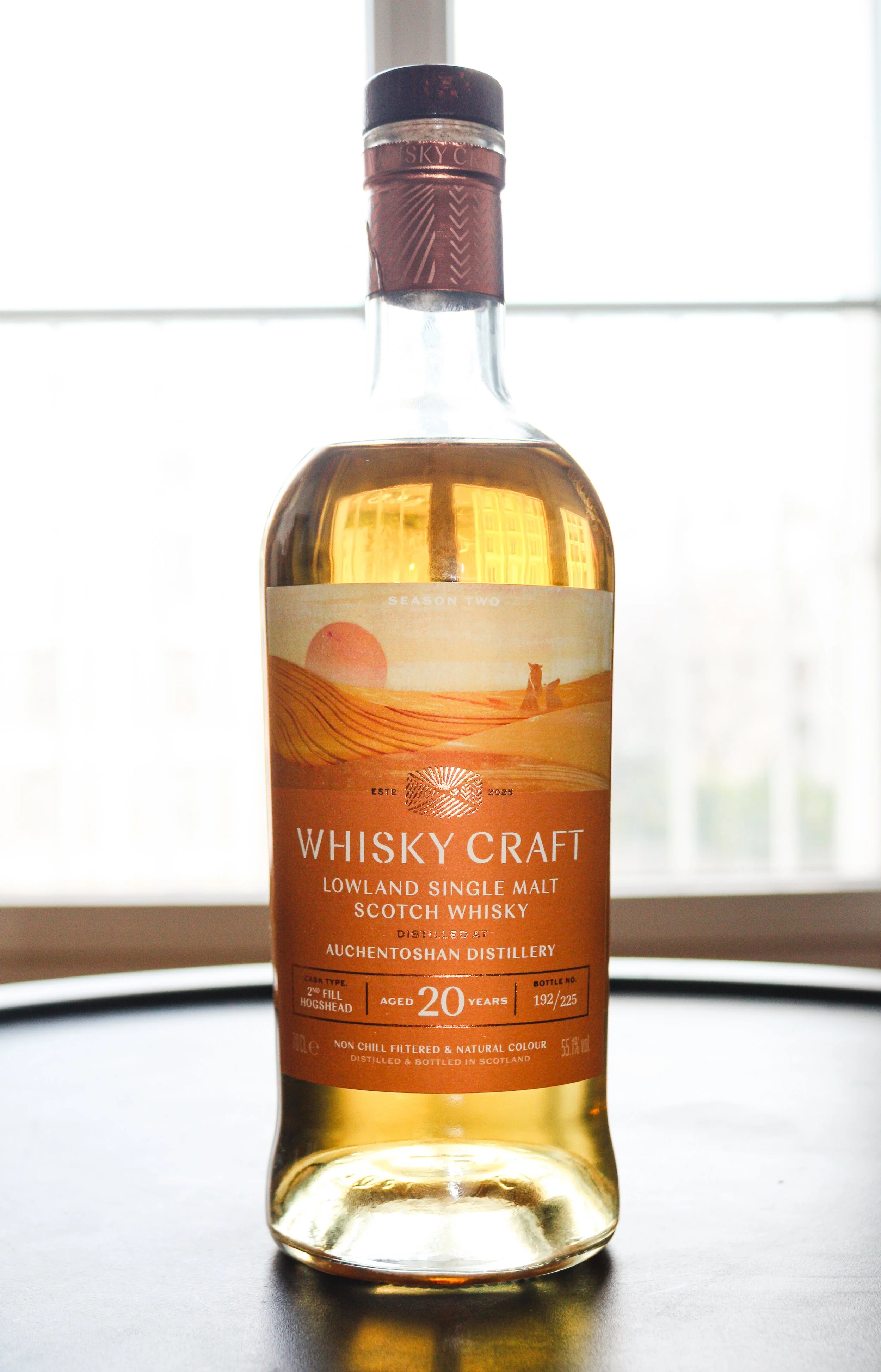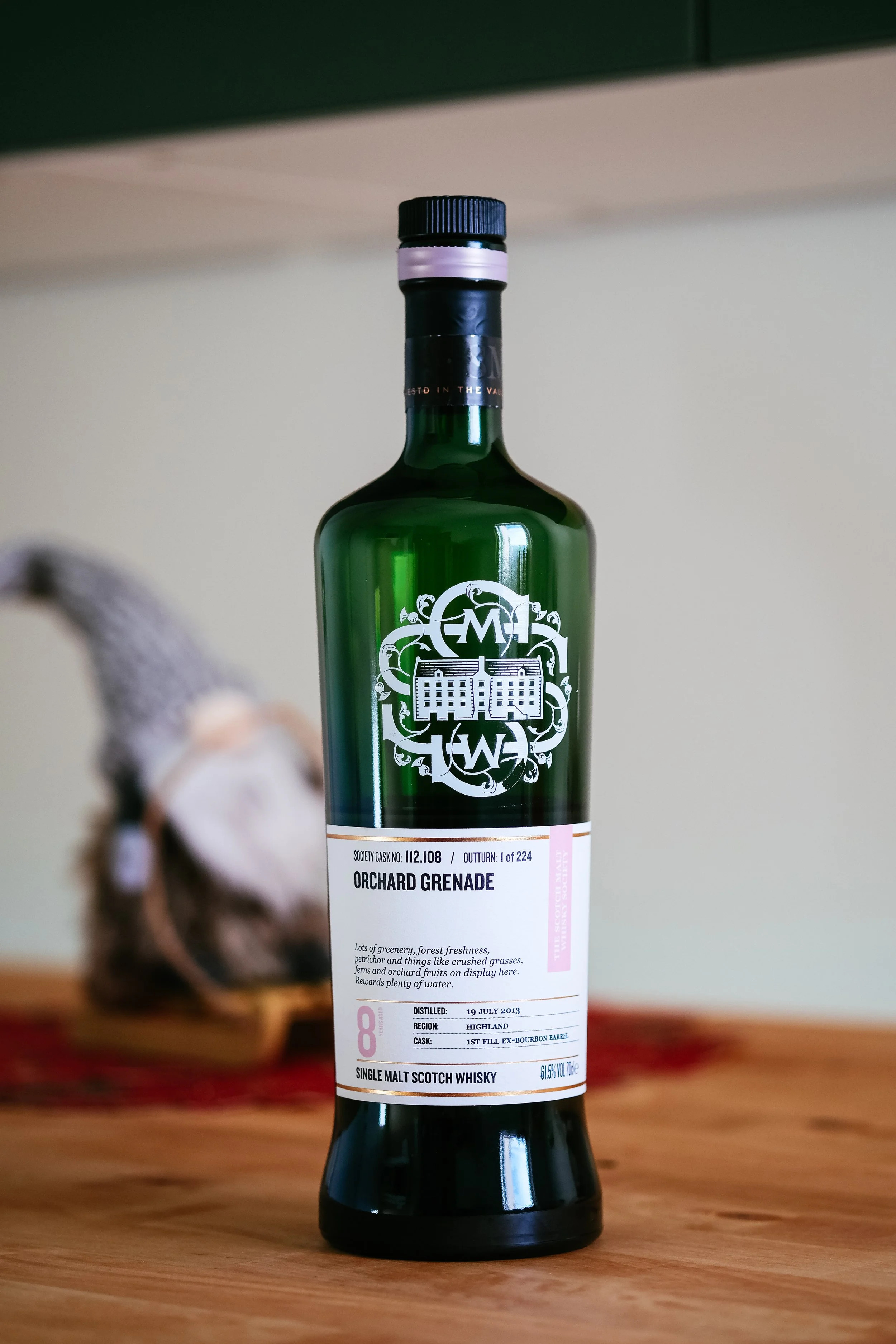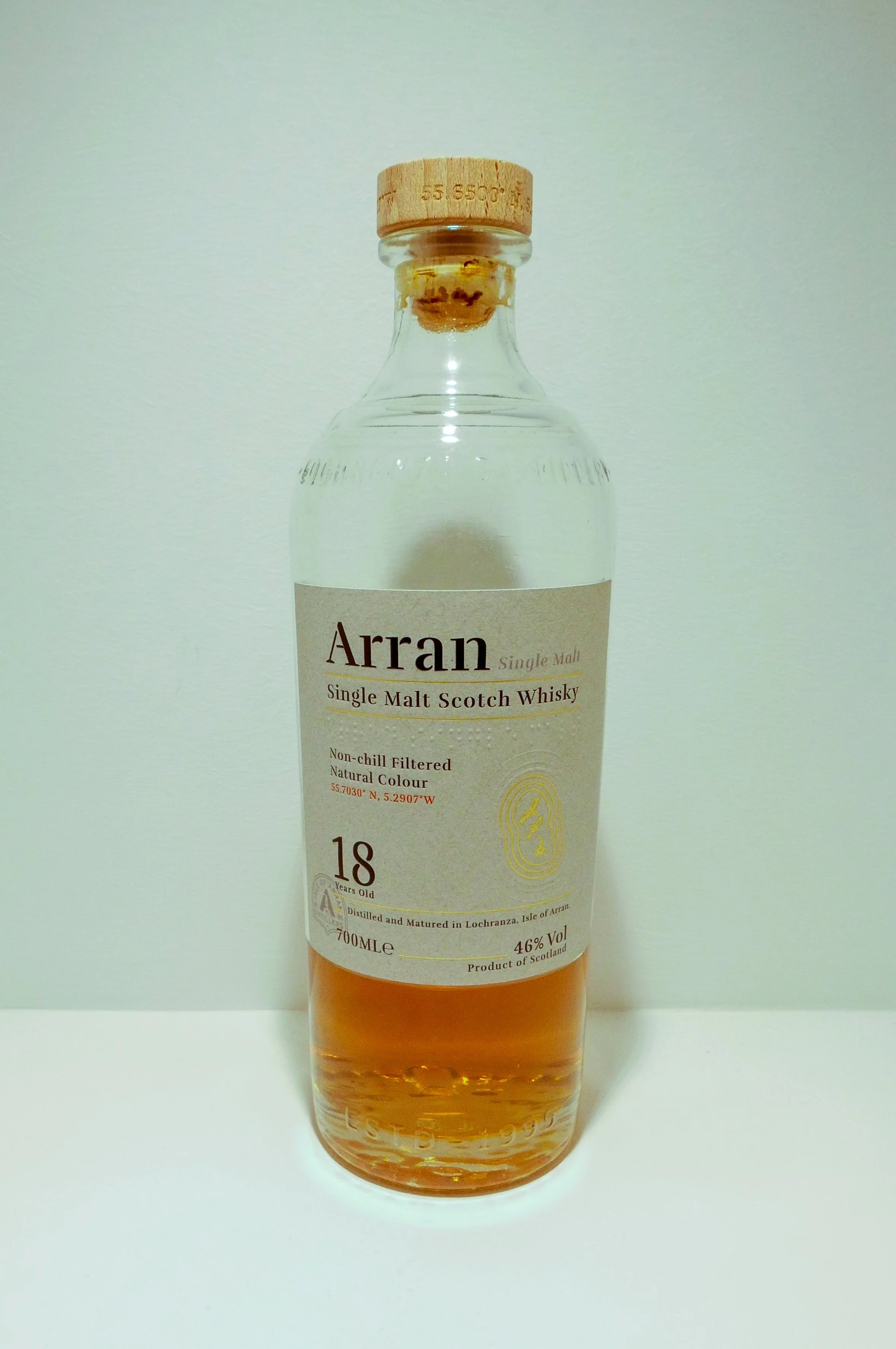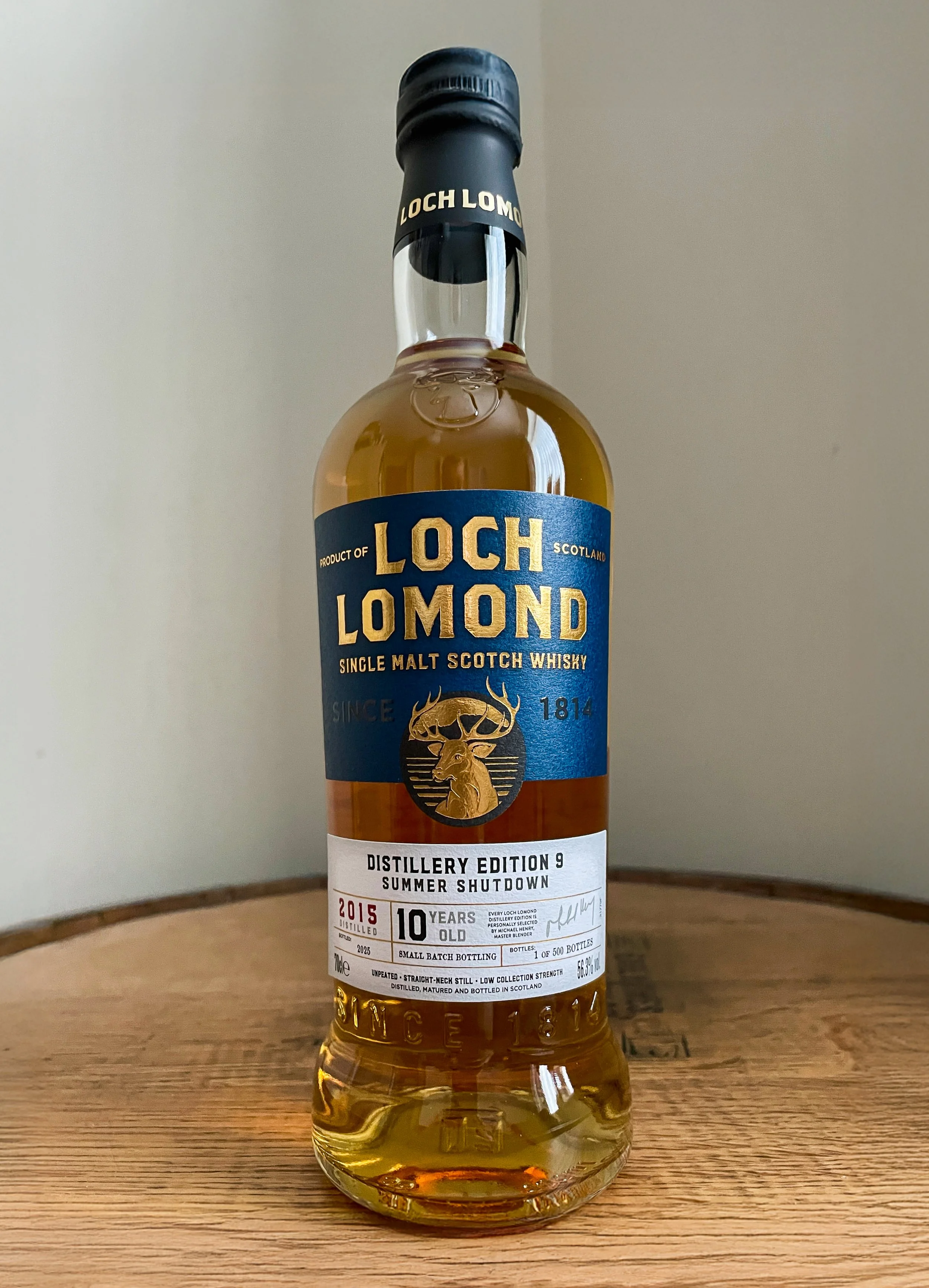Clonakilty Single Pot Still Batch 1
Single Pot Still Irish Whiskey | 46% ABV
Score: 6/10
Good stuff.
TL;DR
It’s Pot Still Jim, but not as we know it
Where are all the Irish?
I don’t know if you noticed, but here at Dramface we tend to be pretty happy to get our beaks and pieholes up and down a glass of amber, whatever its origin may be.
I think I speak for probably most of the team here when I say that we tend to agree on the idea that good whisky is good whisky, wherever it’s made. It just so happens that we might be ‘a tad’ biased in believing that - at least until today - a lot, if not most, of the good stuff is still being made in good ol’ Caledonia.
Backoffice of what lies behind this website, we have this wee handy spreadsheet that keeps track of whatever it is we’ve been reviewing, how we’ve scored it, what we paid for it etc. Upon writing this, the tally of published reviews sits at over 1300, with dozens and dozens more in various stages of ‘work-in-progress’.
Over a thousand of those published reviews tackle Scotch single malt, and over a hundred more cover either single grain Scotch, blended malt Scotch or blended Scotch. It’s clearly what makes us tick and floats our boats, apparently. Having said that, still a fairly decent amount of what we write about covers American whiskeys or bourbon and the unfortunately titled category of ‘world whisky’.
Irish whiskey, in whichever form or category (pot still, single malt, blended malt, or simply blend) has its own category. Mainly because it very much is a thing in its own right, with tons and tons of provenance, history and pedigree to go with it. The only thing is that we (i.e. team Dramface) seem to have been overlooking it, up to a point where you might even accuse us of downright negligence. Less than 2% of all reviews here on Dramface cover Irish whiskey. And, much like waiting endlessly for a bus, all of a sudden two arrive almost at the same time. This one and Hamish’s take on Dingle 10 yo from just a few weeks ago.
[Edit: Hamish threw in another last week, but your point stands. Ed.]
It's not as if we do it on purpose. There’s no ‘plan’ behind what gets reviewed and what doesn’t. As you (hopefully) know: the vast majority (well over 90% I’d wager) of what gets reviewed on Dramface, comes from bottles bought and paid for (I never really got that idiom as it’s basically saying the same thing twice) by the contributors. And as already touched upon; Scotch whisky is what tends to get us excited. Or disappointed. In any case, it’s where our focus tends to lie.
But maybe, and this is something Hamish discussed in his Dingle review as well, the Irish whiskey industry itself is at least partially responsible for not always getting its due attention?
Sure, when - roughly 10 years ago now - Teeling more or less on its own kicked off an entire Irish Whiskey revival, people took notice. New brands and new distilleries, much like in Scotland and a lot of other places all around the world, were popping up like mushrooms in an autumnal forest. The problem, or at least I perceive it as such, was not that all of a sudden there was an abundance of choice when talking about Irish whiskey; the problem came and up to a point still comes, in my opinion, from a lack of transparency.
While it is absolutely heartwarming to see the age-old tradition of Irish whiskey seeing a revival after decades of stagnation and downfall, up to the point where there were literally only a handful of distilleries left; a lot of that sudden abundance in choice was essentially just sourced stuff from the same two or three major operating distilleries - repackaged and rebranded as something new. There’s a nice, rather appropriate saying in Dutch (oude wijn in nieuwe zakken – old wine in new bags) which alludes to the situation where old ideas, thoughts or, indeed, products and commodities, are merely given a make-over or quick proverbial paint job to pass them off as something new.
And I feel that’s where Irish Whiskey sort of becomes a bit blurry. New distilleries sourcing whiskey from established producers like Cooley or Midleton, but then being all vague and deliberately misleading when branding it - often down the lines of ‘Irish whiskey matured and bottled at (insert new distillery name here)’ failing to mention that they didn’t actually distil it themselves.
Other brands are arguably even worse offenders as they’re trying to make it look as if they fully produced their whisky. Yet they are essentially doing what independent bottlers do; only failing to mention that they neither distilled it (as there simply isn’t a distillery to call their own), while also happily ignoring that they had very little to do with basically everything up until it was time to decide upon the size and shape of the bottle, the bottling strength and the label.
While this will likely be of very little concern to occasional customers who are just looking for something nice, there’s a scrutinous bunch of opinionated folk who do pay attention. And often they are the ones who are willing to cough up some of that extra money for something they deem worthwhile. Many times over. The worst part is that brands and producers, new ones and established ones alike, often took advantage of the renewed interest in Irish whiskey to seriously jack up their prices. Nil novi sub sole, indeed…
Now, I ‘m well aware I started this review with the notion that ‘good whisky is good whisky, no matter where it’s made’, but in a time where transparency and integrity are essentially chapter one and two of ‘21st Century Marketing 101’, I feel the lack of transparency - combined with many seriously overpriced whiskeys - are the main reasons why many of us are perhaps a bit wary when finding our way through the Irish whiskey renaissance of recent times.
In a way it’s a bit like the issues many of us have with ‘Japanese’ whisky, which often turns out to be not very Japanese at all. The big difference here is of course that when it says ‘Irish whiskey’ on the label, we can at least be sure that it actually was made in Ireland.
Review
Clonakilty Single Post Still, triple distilled Irish Whiskey, batch 1, 2024 release, matured in bourbon casks, oloroso casks and amontillado casks, 46% ABV
€60 paid (£52) still some availability
Hopefully, the transparency issue will also be a passing thing. At least up to a certain extent and where the actual new wave of Irish distilleries are involved.
The downside here is that time isn’t always on their side as it’s becoming increasingly clear that momentum has passed and the arrival of new distilleries presenting their own product is met with far less enthusiasm than it was three or four years ago. So much so that some of those new endeavours have unfortunately proven to be quite short lived.
Clonakilty distillery was founded in 2016 and is located in the namesake town in the county of Cork in the South of Ireland. As one of roughly 50 Irish distilleries currently operational, it surfed the hype and watched the wave come down again, all but crashing onto the shores of the Atlantic Irish coast.
After relying on sourced whiskey for their initial releases, they now seem to have reached a point where they could establish themselves as one of those producers that are now fully dependent on their own spirit. Even more so, they make a point of using Irish barley which they source from their own farm. The label/bottle also clearly states ‘distilled, matured and bottled at Clonakilty distillery’.
Boxes are being ticked here…
Score: 6/10
Good stuff.
TL;DR
It’s Pot Still Jim, but not as we know it
Nose
Soft, fruity and floral. Think lavender, as it even has a bit of a soapy touch to it: in a pleasant way, to be clear. Sweet honey and cereal notes with a lactic touch shine through. A hint of lightly roasted nuts seal the deal. Overall it presents itself as quite light, yet layered and busy, and it has a pleasant balance between sweet and sour notes.
Palate
Gentle arrival on a light, slightly dry mouthfeel. Again there’s this sweetness – less from floral notes and more in the form of grain and cereal notes and honey. A gentle nutty, tannic bitterness counters things – I’m guessing those amontillado casks are coming into play here. Towards the end it brings a soft yet clear spiciness to it with a classic combo of pepper and sea-spray like salinity.
The Dregs
In short: good stuff! Not excelling in any way but definitely well above average. I would love to see one of their whiskies being fully (refill) bourbon cask-matured to get a better understanding of what their whisky is really about, but I’m definitely not complaining here, as this one offers a nice balance between spirit and cask.
In a way it reminds me somewhat of a young Arran (perhaps this is a bit more tannic?), which I feel is a good thing. Now, if you’re like me and your idea of what ‘pot still whiskey’ tastes like was founded on stuff like Powers 12yo and Red Breast 12yo cask strength: this is not that.
Yes, those cereal notes are here too, but that creamy, lactic characteristic (which I personally really love in those ‘benchmarks’) is quite subdued in this one. It could be something to do with the mashbill or fermentation times or the distilling process or the casks involved or all of the above, but this is a bit lighter, making this a bit of a ‘summery’ whiskey.
Is it standing out and distinctively characteristic and recognizable? I don’t think so. Not yet at least. Do I enjoy this nonetheless? Absolutely I do. A solid six.
Score: 6/10
Tried this? Share your thoughts in the comments below. EA
-
Dramface is free.
Its fierce independence and community-focused content is funded by that same community. We don’t do ads, sponsorships or paid-for content. If you like what we do you can support us by becoming a Dramface member for the price of a magazine.
However, if you’ve found a particular article valuable, you also have the option to make a direct donation to the writer, here: buy me a dram - you’d make their day. Thank you.
For more on Dramface and our funding read our about page here.
Other opinions on this:
Got a link to a reliable review? Tell us.


































